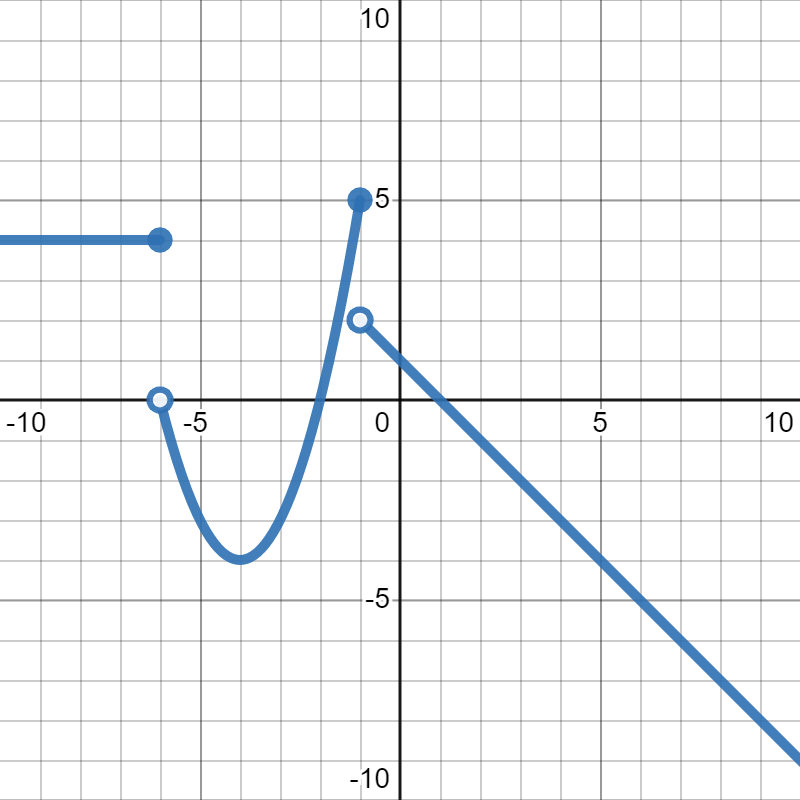Section 2.4 Algebra with Functions
Example 2.24.
Suppose \(f(x)=x^2-7x\) and we want to evaluate \(3f(2)-4\text{.}\) Since we start with functions, we first need to find \(f(2)=(2)^2-7(2) = 4-14=-10\text{.}\) We can then plug that into our original expression and simplify: \(3(2)-4 = 3(-10)-4 = -34\text{.}\)
Checkpoint 2.25.
Suppose \(f(x)= 3x-5\) and \(g(x)\) is given in the graph below:

Evaluate \(7f(2)-(g(-2))^2+1\text{.}\)
\(7f(2)-(g(-2))^2+1=8\)
We start by evaluating the functions, but it doesn't matter which function we start with. Let's just go left-to-right:
From the graph, we can see that \(g(-2)=0\text{.}\) So, we can plug those values into the original expression:
Sometimes you'll have some arithmetic to do inside your function before evaluating it. The key is to work from the inside out.
Example 2.26.
Suppose \(f(x)=x^2-8\) and we want to evaluate \(-f(2+3)+1\text{.}\) In that case, we start inside the function by simplifying \(2+3=5\text{.}\) Then, we can evaluate \(f(5)=(5)^2-8=17\text{.}\) Finally, we can plug that into our original expression to get the final answer: